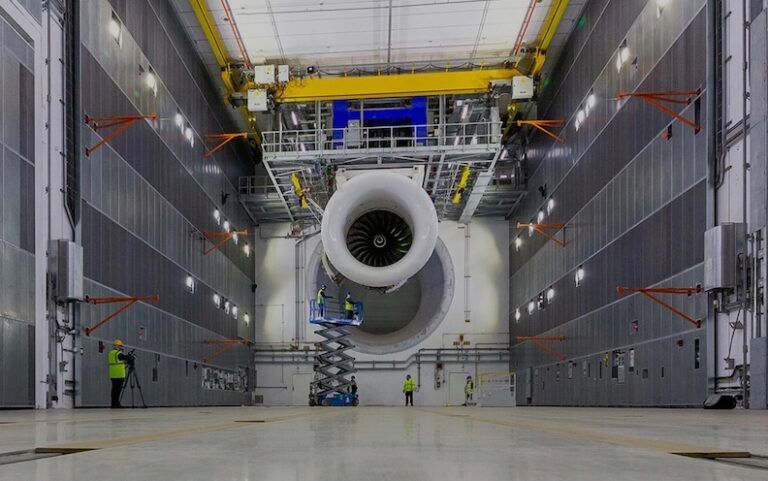Rolls-Royce has successfully completed the first engine run on its Testbed 80, the largest indoor aerospace testbed in the world before its official opening.
The 7,500 square meters (80,730 square feet) testbed, which is located in Derby, UK cost US$122 million (£90 million) and has taken three years to build. The first run was conducted on a Rolls-Royce Trent XWB engine.
Chris Cholerton, president of Rolls-Royce Civil Aerospace said, “Today is an important landmark in our journey towards a more sustainable future for aerospace and aviation. Testbed 80 will not only test engines such as the Trent XWB but also the engines and propulsion systems of the future, which will see us take another step towards decarbonisation.
“It’s great that the first engine test has been a success and we are looking forward to the official opening of the facility in the coming months.”
As well as current generation Trent engines such as the XWB and 1000, Testbed 80 will be used to test Rolls-Royce’s next generation UltraFan demonstrator. The facility has been designed to accommodate engines of all sizes up to 155klbf of thrust and will also be used to test Sustainable Aviation Fuels (SAFs), which can be used as a “drop-in” fuel in Rolls-Royce’s existing engines with the help of a 140,000 litre fuel tank.
Testbed 80 is also equipped with what Rolls-Royce calls the most capable and complex data system of any of its testbeds and is able to deliver data directly to secure storage, linked for the first time to analytical models and engineers. Its instrumentation system can collect data from more than 10,000 different parameters on an engine, using a web of sensors that detect vibrations at a rate of up to 200,000 samples per second.
The testbed also features an x-ray machine that is able to capture 30 images per second and send them directly to a secure cloud, where engineers around the world can analyze them alongside the 10,000 other data parameters measured. Rolls-Royce said it is the only engine manufacturer in the world able to x-ray engines while they are running.





